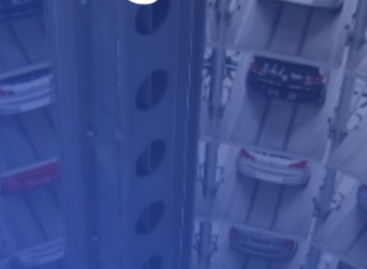Hungarian Leasing Association: Many are waiting in the leasing market, state-supported schemes remain vital
The domestic leasing market has seemingly performed stably in the first months of 2025, but subtle shifts are emerging beneath the surface. While the amount of new financing has barely changed compared to the previous year, the number of contracts has decreased, indicating that many players are still waiting. According to the Secretary General of the Hungarian Leasing Association, László Kőszegi, corporate clients continue to be dominant in the market, especially small and medium-sized enterprises, for which subsidized leasing structures are the most important source of investment. Although passenger car and light commercial vehicle financing remains a driving sector, some segments – such as other machinery and large commercial vehicles – have stalled. The scope for leasing companies is also shaped by the interest rate environment, state subsidies and the availability of foreign currency-based financing, while new financing targets – such as electromobility – are becoming increasingly prominent.
 In the first quarter of 2025, the domestic leasing market roughly repeated the performance of the same period last year in terms of the financed amount, however, the decrease in the number of contracts indicates a slight decline in market activity. The value of placements amounted to HUF 209.3 billion, which represents a minimal, 0.3 percent decrease compared to the same quarter of the previous year. In contrast, the number of contracts showed a more noticeable, 7.8 percent decrease, i.e. reaching only 18,559 units.
In the first quarter of 2025, the domestic leasing market roughly repeated the performance of the same period last year in terms of the financed amount, however, the decrease in the number of contracts indicates a slight decline in market activity. The value of placements amounted to HUF 209.3 billion, which represents a minimal, 0.3 percent decrease compared to the same quarter of the previous year. In contrast, the number of contracts showed a more noticeable, 7.8 percent decrease, i.e. reaching only 18,559 units.
The total portfolio showed growth: the value of the stock increased by 5.9 percent and reached HUF 2,279 billion. At the same time, the number of contracts in the stock decreased: it was 3 percent lower than the value measured in the first quarter of 2024, at 311,275 units.
According to the data of the first quarter, the vast majority of leasing financing, approximately 90 percent – which means 188 billion forints – can be linked to companies. In terms of customer composition, based on the financed amounts, 75 percent of the leasing service providers’ partners are small and medium-sized enterprises, and 25 percent are large companies. The proportion of private individuals is only 9 percent, while state and other non-retail players are almost absent. At the same time, László Kőszegi emphasized that “retail contracts account for 20 percent of the total number, and if we look only at retail car financing, the retail share is already 27 percent.”
According to the data of the Hungarian Leasing Association, 82 percent of the financed amounts were related to new, while 18 percent were related to used vehicles.
Related news
Stable growth with fewer contracts: the leasing market’s adaptability has reached a new level in 2025
🎧 Hallgasd a cikket: Lejátszás Szünet Folytatás Leállítás Nyelv: Auto…
Read more >Companies are waiting, calculating and delivering – new room for manoeuvre on the fleet market
🎧 Hallgasd a cikket: Lejátszás Szünet Folytatás Leállítás Nyelv: Auto…
Read more >Slight growth in the leasing market
🎧 Hallgasd a cikket: Lejátszás Szünet Folytatás Leállítás Nyelv: Auto…
Read more >Related news
The New Year’s Eve fireworks fair is back: temporary sales will start in department store parking lots at the end of December
🎧 Hallgasd a cikket: Lejátszás Szünet Folytatás Leállítás Nyelv: Auto…
Read more >The first Eastern European non-alcoholic beer turns 50
🎧 Hallgasd a cikket: Lejátszás Szünet Folytatás Leállítás Nyelv: Auto…
Read more >Sausage: pork prices are already going down, but they won’t be cheaper in stores – a significant correction may come in the spring at the earliest
🎧 Hallgasd a cikket: Lejátszás Szünet Folytatás Leállítás Nyelv: Auto…
Read more >






